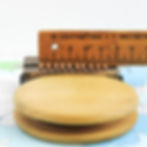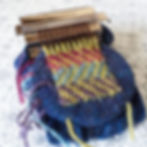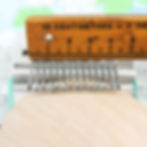14 hook vs 10 hook looms....which one is best for you!
- Becs McLaughlin
- Jun 27, 2021
- 3 min read
Do you want to have a guess at the question I'm most frequently asked on social media and regularly pops into my inbox? Well, it's always a question in some form relating to the difference between a 10 hook and 14 hook loom.
"Can you tell me the difference between a 10 hook and 14 hook loom? Which one should I buy?"
After lots of practice using many different versions of these fabulous little machines and hours of cleaning up vintage models I've noticed there are many differences between the two. It's important to be aware of these differences when darning with one, so I decided it was about time I write a blog post dedicated to this topic.

When searching for a Speedweve loom you may come across both vintage and replica (new) models with 10, 14, 16 or even 21 hooks (although you'll most commonly find 10 or 14 hook looms).
The design of vintage models can vary depending on their age and where it was originally manufactured. Within this article I will refer to the vintage 10 hook and 14 hook looms produced in the U.K. between the 1930s and 1950s (both Models 1 and 2) known as a Speedweve or 'Lancashire's Smallest Loom'.
New replica models also differ slightly so I will focus on the 14 hook model I sell in my own online shop. These are produced using original vintage machines which back in the day made a version of the Model 2 Speedweve sold in Russia/Soviet Union in the 1960s.
Ok! So, let's get to it! There are 4 main differences which are as follows:
size of the hook ends
spacing between the hooks
width of the darning area
and number of hooks!


A vintage 10 hook loom has:
slightly larger hook ends.
wider spaces between each hook.
and a narrower darning area: approx. 43mm.
"But, what difference does that make?", I hear you ask!
the larger hook ends will allow you to darn using thicker thread or yarn.
the larger hook spacing and fewer number of hooks will create a slightly looser weave.
your finished patch will be slightly narrower if you use all 10 hooks vs 14 hooks (approximately 2-5mm).
and fewer hooks gives you a little less flexibility to play with colour and pattern as you're finished patch will have 8 less vertical (warp) threads and fewer horizontal (weft) threads as you need to use thicker thread/yarn.
If you'd love to start repairing a precious wool coat which has had a full blown attack from some naughty moths, or your favourite hand-knitted jumpers and socks, then this is the loom for you! It's equally suitable for working on heavier fabrics and household items e.g. blankets and towels.





Now, let's get on to the 14 hook loom. This has:
slightly finer hook ends.
a darning area that measures between 45mm and 48mm across; a vintage 14 hook loom has a very slightly wider hook spacing and therefore wider darning area.
narrower spaces between each hook.
"So, what does that mean?"
the finer hook ends will allow you to darn using finer thread, but not yarn unless it's quite fine e.g. laceweight.
the closer hook spacing will create a slightly denser/tightly woven patch.
your finished patch will be slightly wider if you use all 14 hooks.
and you can have a bit more fun with colour as you have more vertical (warp) and horizontal (weft) threads.


[Image: Replica 14 hook loom pictured on the left and a Vintage 14 hook loom pictured on right]
A 14 hook loom is the one for you if you dream of repairing denim, cotton or linen; essentially anything that is fine or medium weight rather than thick or heavy fabrics.


Whatever loom you choose I can be sure you're going to have hours of fun creating all sorts of pattern and colour combinations whilst prolonging the life of some of your favourite garments and saving them from landfill.
If you found this article helpful then please feel free to share it with your fellow menders and if you have any questions then pop a comment in the box below!
Click on the links below to take a look at some of the products featured in this article:





